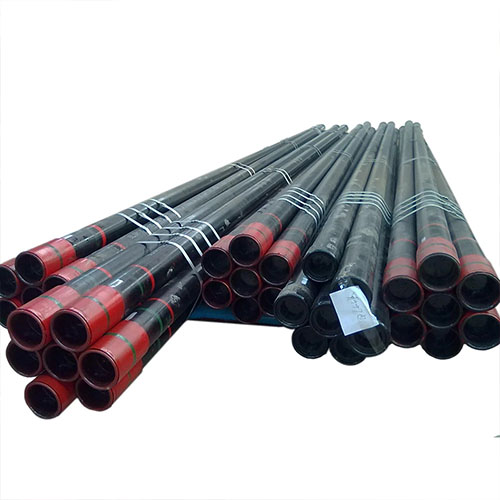Finite Element Analysis of Slip Type casing Hanger in Tarim Oilfield
The Tarim Oilfield, located in the Xinjiang Uygur Autonomous Region of China, is one of the largest oilfields in the country. With its vast reserves and complex geological conditions, the oilfield presents unique challenges for oil and gas exploration and production. One of the critical components in oil well construction is the casing hanger, which provides support for the casing strings and ensures the integrity of the wellbore. In recent years, slip type casing hangers have become increasingly popular due to their ease of installation and reliability.
A study was conducted to investigate the mechanical behavior of slip type casing hangers in the Tarim Oilfield using numerical simulation techniques. Finite Element Analysis (FEA) was employed to model the casing hanger and simulate its performance under various loading conditions. The study aimed to evaluate the structural integrity and load-carrying capacity of the casing hanger and identify any potential failure modes.

The FEA model of the slip type casing hanger was developed based on the actual dimensions and material properties of the hanger. The model included all the critical components of the casing hanger, such as the slips, body, and locking mechanism. different loading scenarios, including axial load, radial load, and thermal expansion, were applied to the model to simulate the operating conditions in the oil well.
The results of the numerical simulation revealed valuable insights into the behavior of the slip type casing hanger under different loading conditions. The analysis showed that the casing hanger could withstand the expected loads and maintain its structural integrity during normal operation. However, the study also identified potential failure modes, such as excessive deformation and stress concentration, which could lead to the failure of the casing hanger under extreme loading conditions.
To improve the performance of the slip type casing hanger, several design modifications were proposed based on the findings of the numerical simulation. these included optimizing the geometry of the slips, increasing the material strength of the body, and enhancing the locking mechanism to improve the load-carrying capacity and reliability of the casing hanger.
Overall, the study on the mechanical numerical simulation of slip type casing hangers in the Tarim Oilfield provided valuable insights into the behavior of these critical components in oil well construction. The FEA analysis helped to identify potential failure modes and propose design improvements to enhance the performance and reliability of the casing hanger. By incorporating these findings into the design and installation of slip type casing hangers, oil and gas companies operating in the Tarim Oilfield can ensure the safety and efficiency of their well construction operations.
Material Selection and Structural Design for Slip Type Casing Hanger in Tarim Oilfield
The Tarim Oilfield, located in the Xinjiang Uygur Autonomous Region of China, is one of the largest oilfields in the country. With its vast reserves and complex geological conditions, the oilfield presents unique challenges for drilling and production operations. In order to ensure the safety and efficiency of these operations, it is crucial to use high–quality equipment that can withstand the harsh conditions of the oilfield.
One important piece of equipment used in drilling operations is the slip type casing hanger. This component plays a critical role in supporting the casing string and ensuring the integrity of the wellbore. In the Tarim Oilfield, where high temperatures, high pressures, and corrosive fluids are common, the casing hanger must be designed to withstand these extreme conditions.
To address this challenge, a study was conducted on the mechanical numerical simulation of slip type casing hangers in the Tarim Oilfield. The study focused on material selection and structural design to ensure the reliability and safety of the casing hanger in this demanding environment.
The first step in the study was to select the appropriate materials for the casing hanger. In the Tarim Oilfield, where corrosion is a major concern, it is essential to use materials that are resistant to corrosion and can withstand high temperatures and pressures. After careful consideration, a high-strength alloy steel was chosen for the casing hanger due to its excellent mechanical properties and corrosion resistance.
Welded stainless Steel Pipe
Once the material was selected, the next step was to design the structure of the casing hanger. The study used finite element analysis (FEA) to simulate the mechanical behavior of the casing hanger under various loading conditions. This allowed the researchers to optimize the design and ensure that the casing hanger could withstand the forces and pressures it would be subjected to in the oilfield.
oil pipe meaning
The results of the study showed that the selected material and structural design met the requirements for the slip type casing hanger in the Tarim Oilfield. The casing hanger was able to support the casing string and withstand the forces and pressures encountered during drilling and production operations. This study not only demonstrated the importance of material selection and structural design in ensuring the reliability of equipment in challenging environments but also provided valuable insights for future research and development in this area.
oil housing cooler
In conclusion, the study on the mechanical numerical simulation of slip type casing hangers in the Tarim Oilfield highlighted the importance of material selection and structural design in ensuring the safety and efficiency of drilling operations. By using high-quality materials and optimizing the design of the casing hanger, operators can minimize the risk of equipment failure and ensure the integrity of the wellbore. This study serves as a valuable contribution to the field of oilfield equipment design and sets a precedent for future research in this area.
